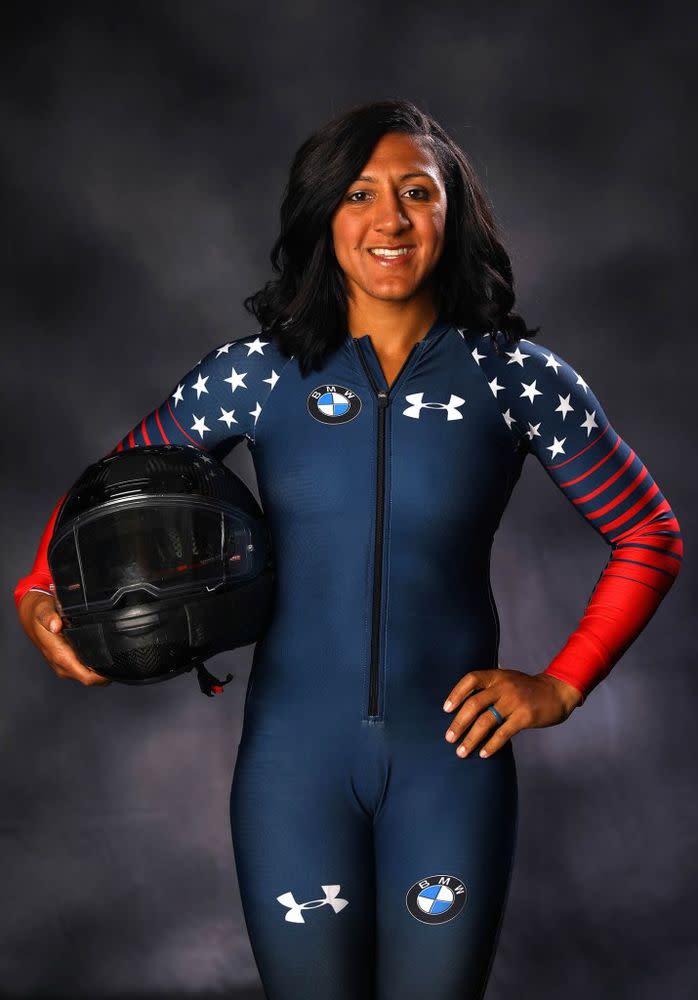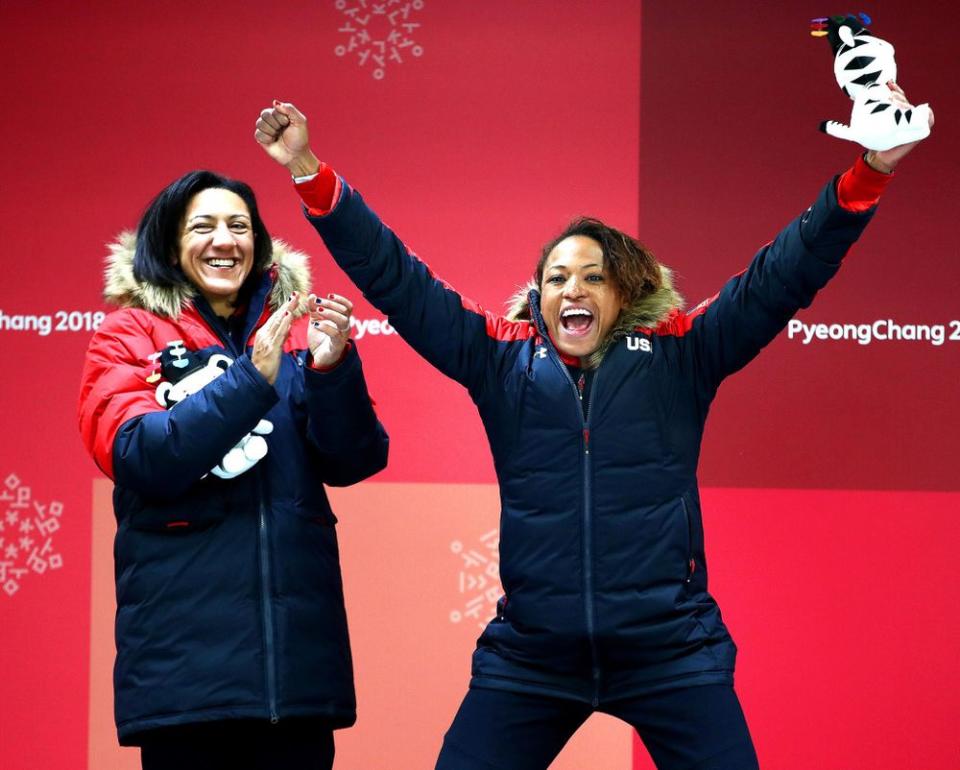How U.S. Bobsledder Won Silver Medal Despite 'Pretty Painful' Achilles Tear: 'I Just Went for It'
The night that U.S. boblsedder Elana Meyers Taylor won her second Olympic silver medal, she walked around afterward, speaking with reporters, without wearing shoes.
The medal around her neck signified her victory, but the cold ground against her feet was its own relief.
As Taylor, 33, later explained, she had raced in the women’s bobsled event at the 2018 Winter Olympics while dealing with a “small tear” in her left achilles tendon that she sustained just days before traveling to South Korea for the Games.
It doesn’t sound bad the way she describes it, until you ask her the kind of hurt she was feeling during the competition and after.
Taylor tells PEOPLE that on Wednesday night, when she earned silver with teammate Lauren Gibbs, the injury had gotten “pretty painful.” It got worse over the course of the two-day, four-race event, she says.
“On a scale from one to 10, it was probably about an eight when I ended the race,” she says. During a sit-down interview on Friday at the Procter & Gamble Family Home (she is sponsored by Pantene), she says the pain is about a six.
Taylor, a native of the Atlanta area, won a silver medal in bobsled at the 2014 Winter Games along with Lauryn Williams and an Olympic bronze four years before that with Erin Pac. She says she damaged her achilles during training in late January in Chula Vista, California, a week before arriving in Korea for the Olympics on Feb. 2.
“I really didn’t think it would be as bad as it was, and then we were treating it and it just wasn’t getting better and then we had training runs and I was like, ‘I can’t push [the sled],’ ” Taylor says. “We tried the first training run to push, and I was like, ‘I can’t do this … I can’t sit in the sled.’ And I pride myself in a pretty high pain tolerance and it was just too bad.”

How did she push through? She had a lot of assistance and, along with her coaches and the medical staff, she adjusted to a new routine that still allowed her to train and compete without overdoing it.
“We had to change our schedule. I had to change the coach I normally walk with,” Taylor says. “We had to adapt everything and people were so willing to help me do whatever I needed to do. It was pretty cool.
Her attitude helped, too.
“I’m the person who’s all in, gonna go full-throttle at something,” she says. “I don’t know if you can be a bobsledder and not have that type of attitude — so yeah, I just went for it.”
Keep Following PEOPLE’s Complete Coverage of the 2018 Winter Olympics
Her doctor assured her beforehand that the risks of a more severe injury, though present, were minimal.
“I was like, ‘Okay, so it’s gonna be painful, but we just gotta go after it anyways,’ ” she recalls. “I made that decision and I knew it going in it was gonna hurt, but at the end of the day I was gonna put on a show and we did.”
In contrast to her Olympic silver in Sochi, Russia, in 2014, Taylor says this second-place finish feels like a win.
“In Sochi I really felt like I was going out there and it was all about winning a gold medal, and so that last heat where it slipped away, I was driving not to lose … and I wasn’t happy with my performance,” she says. “Here, I threw down and I went toe-to-toe with the German who won and I really think it was a great performance and I loved every minute of it.”

She continues: “Specifically with the obstacles we had to overcome to get here, the death of my teammate Steve Holcomb and arriving in a wheelchair with my achilles injury, it’s incredible to walk away with any medal.”
There are more years to come, as Taylor says, “I haven’t even touched the surface as where I can be” as a bobsled pilot.
For now, though, she and husband Nic Taylor, a fellow bobsledder, are planning a vacation. She’d also like to start a family in this next Olympic cycle. “I’m gonna let my body heal and recover and figure out what we want to do from there,” she says.
After that it will be back to the track for Taylor, one of the few prominent women of color competing in winter sports and one of bobsled’s most visible U.S. athletes, who has been noted for her recruiting efforts.
“I feel a responsibility to spread my experience and spread the growth of sport [and] also to promote diversity in the winter Olympics, a world that traditionally looks white, you know?” she says, adding, “If one little girl who looks like me picks up a winter sport because she sees me, that’s all anybody could ever ask for.”

